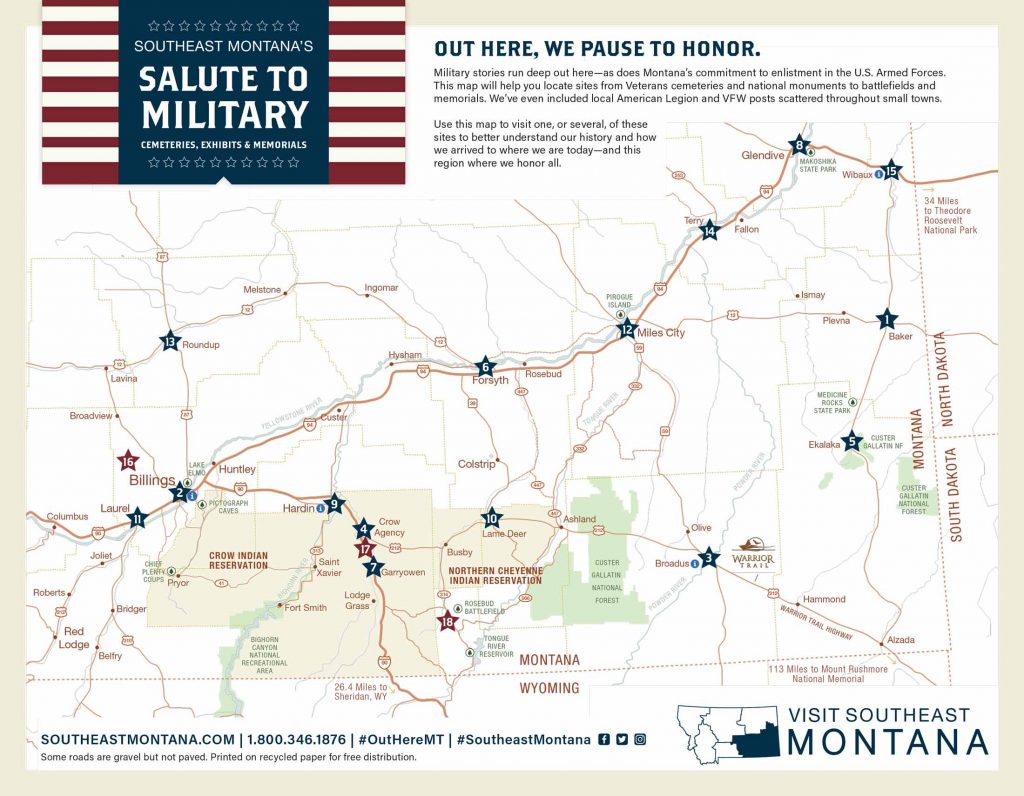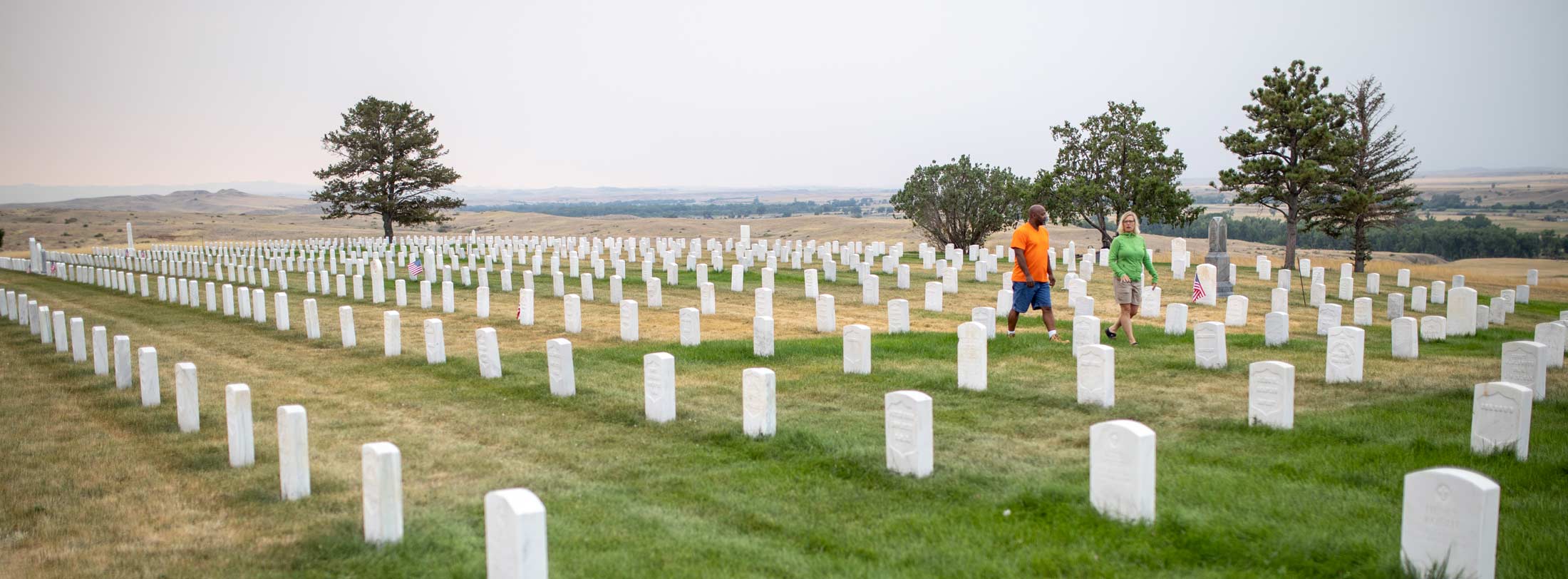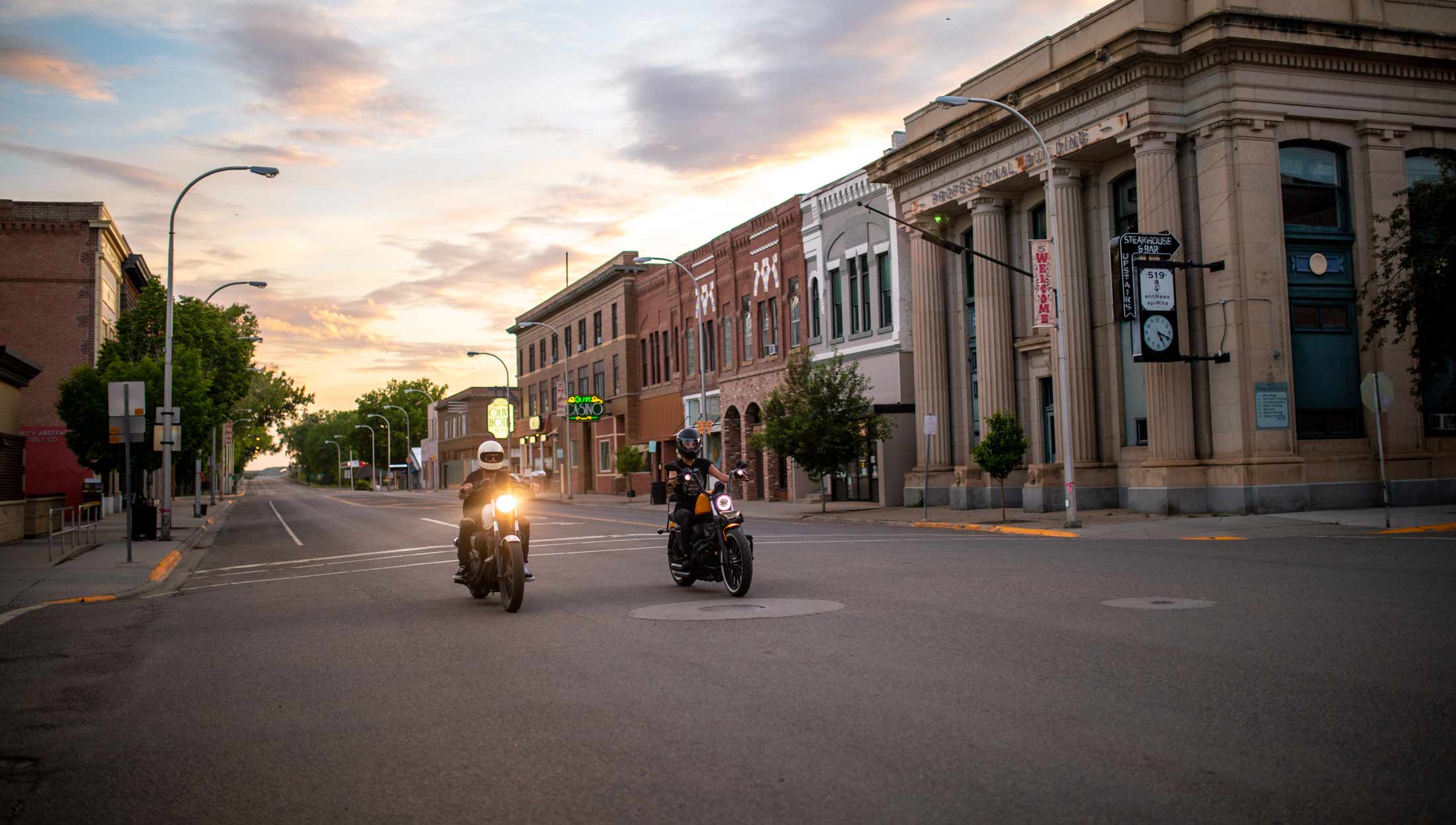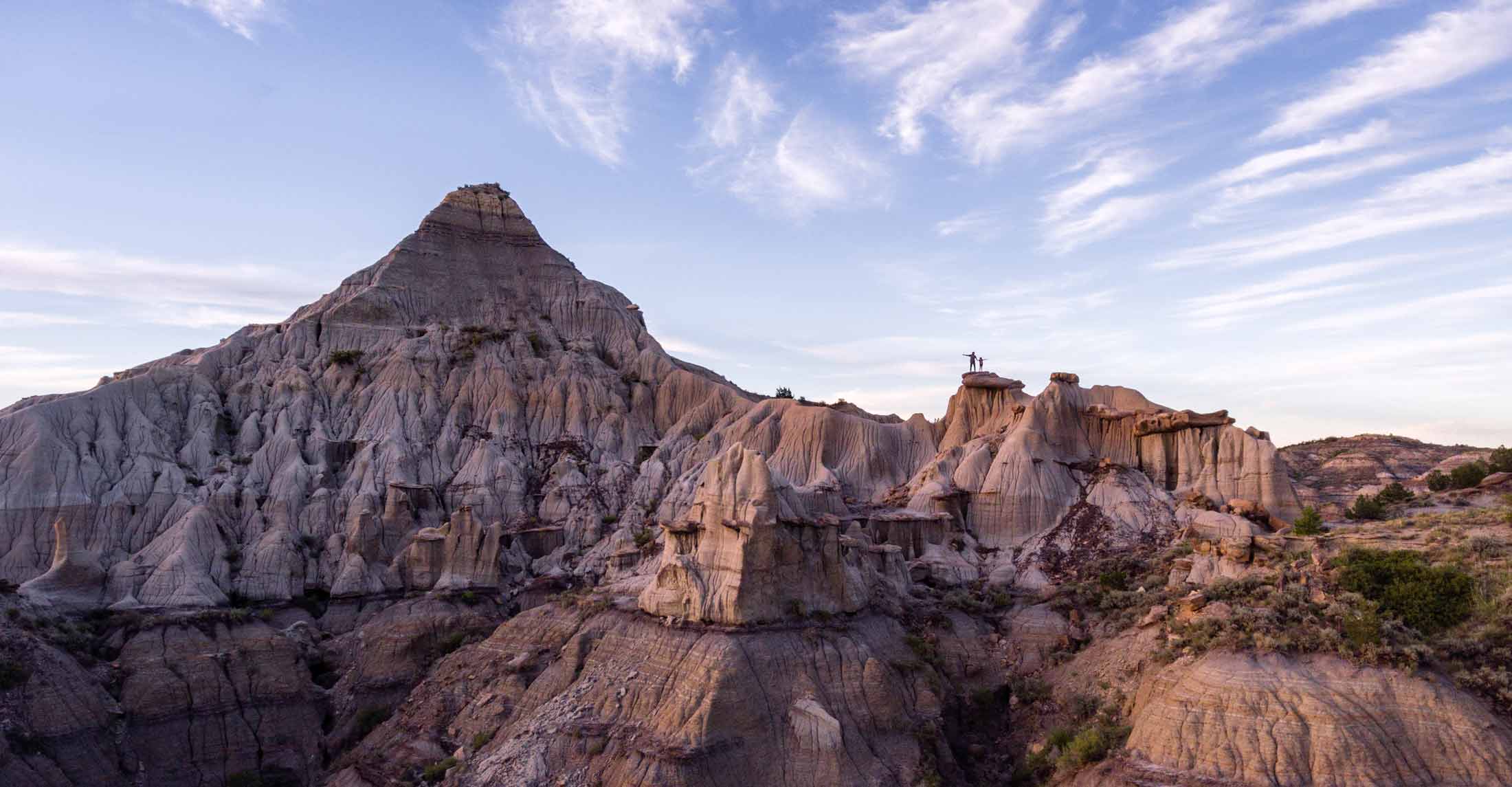From battlefields and cemeteries, to national monuments and museums, here are five places out here where you can honor, learn from and appreciate America’s courageous veterans. These destinations serve as a reminder to us the incredible sacrifices made by U.S. armed forces and their families, and we are proud that across the region support for veterans is evident. Whether it is on Veterans Day or it’s during your next trip, take some time to reflect and remember those who have served.
1. Little Bighorn Battlefield National Memorial
One of America’s best known historic landmarks sits just outside Crow Agency, Montana. The Little Bighorn Battlefield National Monument commemorates the events of the Little Bighorn Battle that took place June 25-26, 1876. The very ground almost reverberates with the intensity of the American Indian warriors who fought for their land and nomadic way of life and the U.S. Army’s 7th Calvary who persisted with incredible loss in the two-day battle. Adjacent to the visitor center and museum, Custer National Cemetery has almost 5,000 graves of unknown veterans from our nation’s wars, Indian scouts, Medal of Honor recipients and local women and children from early isolated frontier posts.
Just about an hour away, visitors can also view Rosebud Battlefield State Park where the Battle of Rosebud, a precursor to the Battle of Little Bighorn, took place on June 17, 1876. The rolling hills of this state park are full of stories, but the landscape still looks very much the same as it was in the 1870s, which makes it a good place to reflect on the history of Southeast Montana.
2. Canyon Creek Battlefield National Monument
Canyon Creek Battlefield National Monument memorializes the second-to-last battle between the Nez Perce tribe and the 7th U.S. Cavalry. This monument sits just eight miles north of Laurel, Montana on Buffalo Trail Road. The battlefield sits on both private and public land, please be respectful and stay on public property. Visit the pavilion, stone monument and bronze plaque to learn more about the warriors who fought in this battle and the local conflicts that took place in Southeast Montana over a century ago.
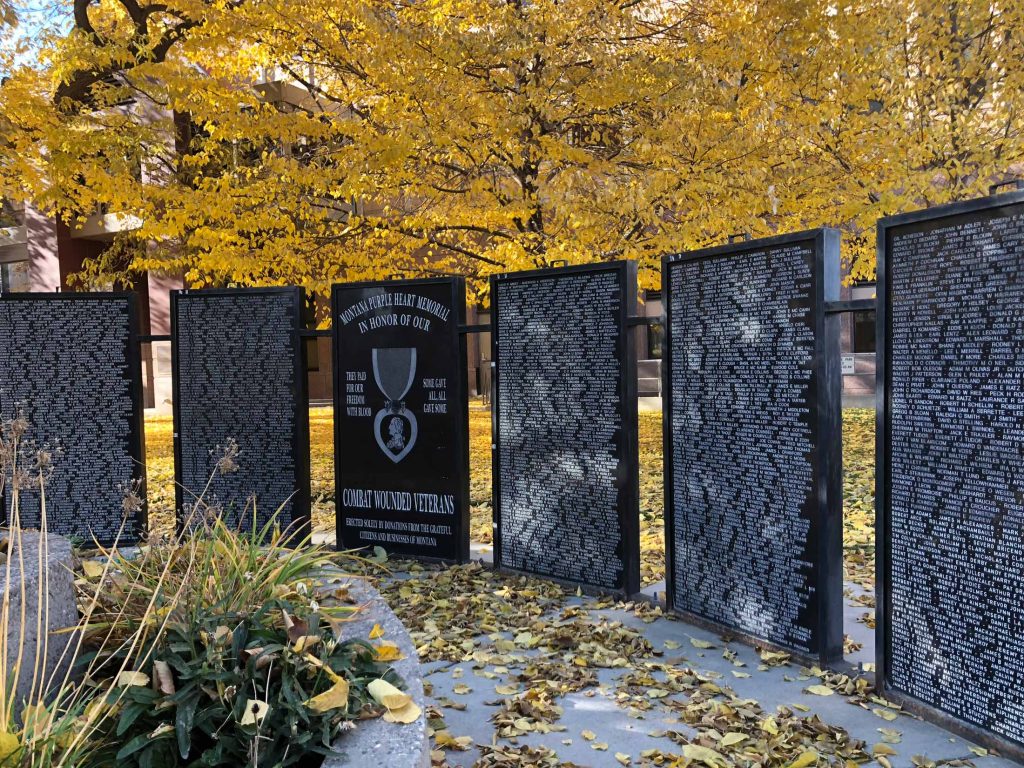
3. Montana Purple Heart Memorial
On the lawn adjacent to the Yellowstone County Courthouse in Billings, you will find over 5,000 names (and counting) inscribed in black granite that makes the Montana Purple Heart Memorial. The memorial was dedicated in 2001, built to honor men and women of the U.S. armed forces who were wounded or killed while in battle for our country. The names inscribed represent veterans who served as far back as the Indian Wars up to the Afghanistan War. Reading through the names at a memorial such as this, you’ll see your reflection amongst the names and feel a connection to those who are gone.
In Billings you can also visit the Yellowstone Kelly Interpretive Site, which commemorates one of America’s most notable veterans, or visit the American Pride Memorial at Veterans Park, which is dedicated to all veterans.
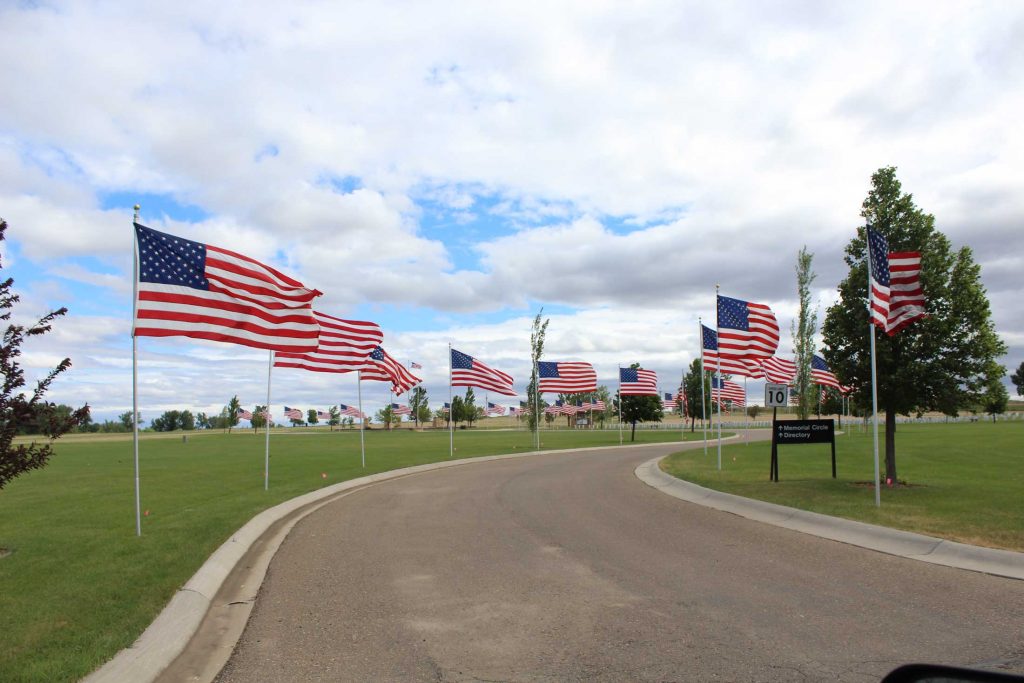
Photo credit: Miles City Chamber of Commerce
The Yellowstone National Cemetery, dedicated in 2014, sits just north of Laurel, Montana. Recent expansions brought the cemetery 767 in-ground concrete crypts, a large 320-niche columbarium, new signage and an interment plaza. Eastern Montana State Veterans Cemetery located in Miles City, Montana, is one of the three state veteran cemeteries. Currently, there are around 500 memorial graves in this peaceful 33-acre cemetery. Other cemeteries in the region include Mountview Cemetery in Billings, Rosebud County Cemetery in Forsyth, Lame Deer Cemetery in Lame Deer.
4. Carter County Museum
Museums are a great place to learn more about past wars—near and far—and those who fought in them. Carter County Museum in Ekalaka has a complete military exhibit located in the dedicated Veteran’s Room. This display possesses uniforms, accoutrements and memorabilia dating all the way back from the Indian Wars in the 1800s to modern day conflicts like Desert Storm. Much of the artifacts in this collection come from families in the area who have donated relics, and stories that come with them, to be preserved and shared with future generations. The best part about small town museums are the volunteers and staff, who are intimately familiar with each of the narratives behind the exhibits. Their stories bring the displays to life.
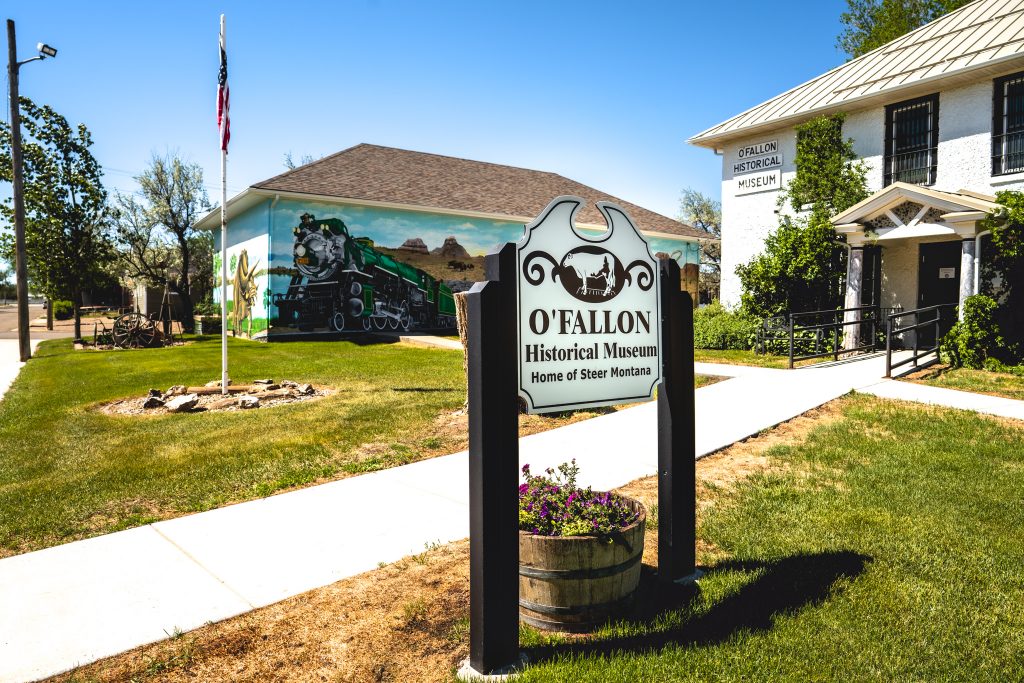
Photo credit: Jamie Blotske
5. O’Fallon Historical Museum
The O’Fallon Historical Museum boasts an impressive military display of World War I and II artifacts. This exhibit is uniquely situated in part of the museum in what used to be the Fallon County Jail, built in 1916. This small-town museum, located in Baker, is filled with local stories and relics passed through generations. While you are there, Baker is also home to the Fallon County Veterans Memorial located at the city park. There are over 1,500 names engraved on the memorial honoring veterans who served in the Civil War to the present conflicts in Iraq and Afghanistan.
There is much more military history to explore out here in Southeast Montana, including unique military displays such as the Pierre Wibaux Museum, Powder River Historical Museum, Big Horn County Museum, Rosebud County Pioneer Museum and Musselshell Valley Historical Museum. Visit their websites for more information.
Not sure where to begin? View our Southeast Montana History Map which lists more than 30 cemeteries, exhibits and memorials across the region that honor the military and our country’s history.
